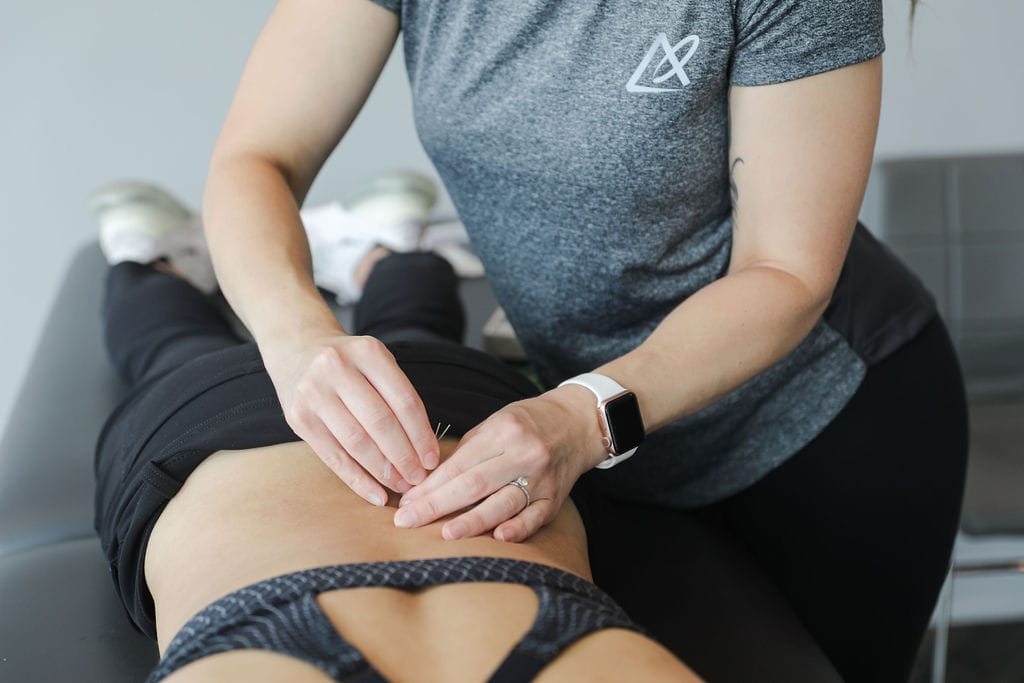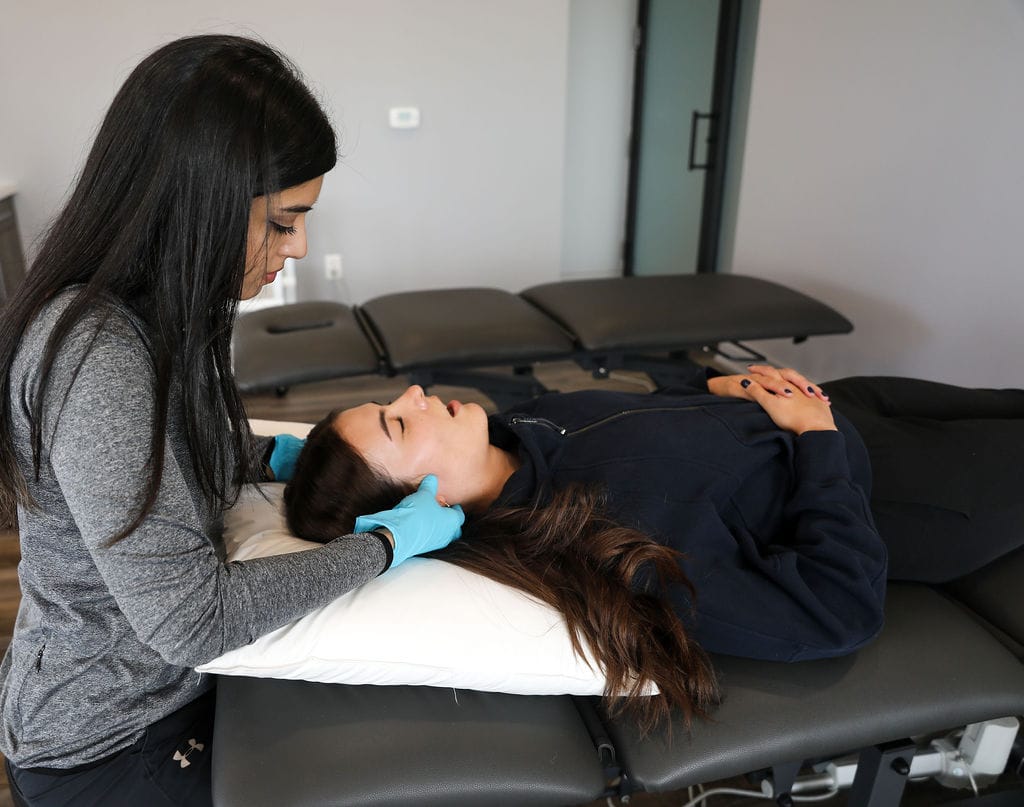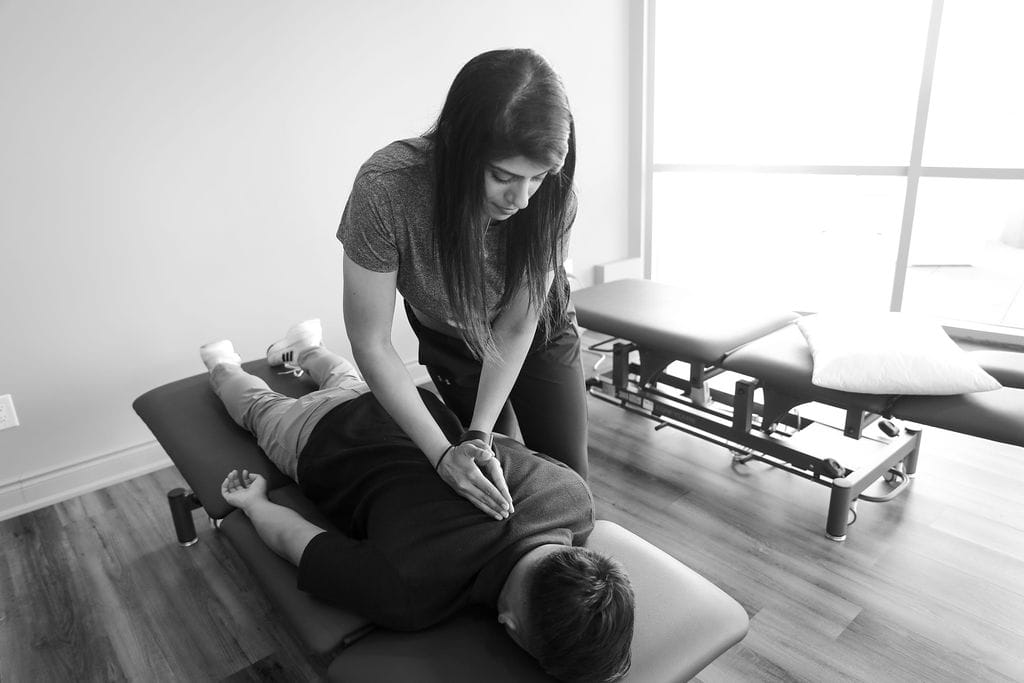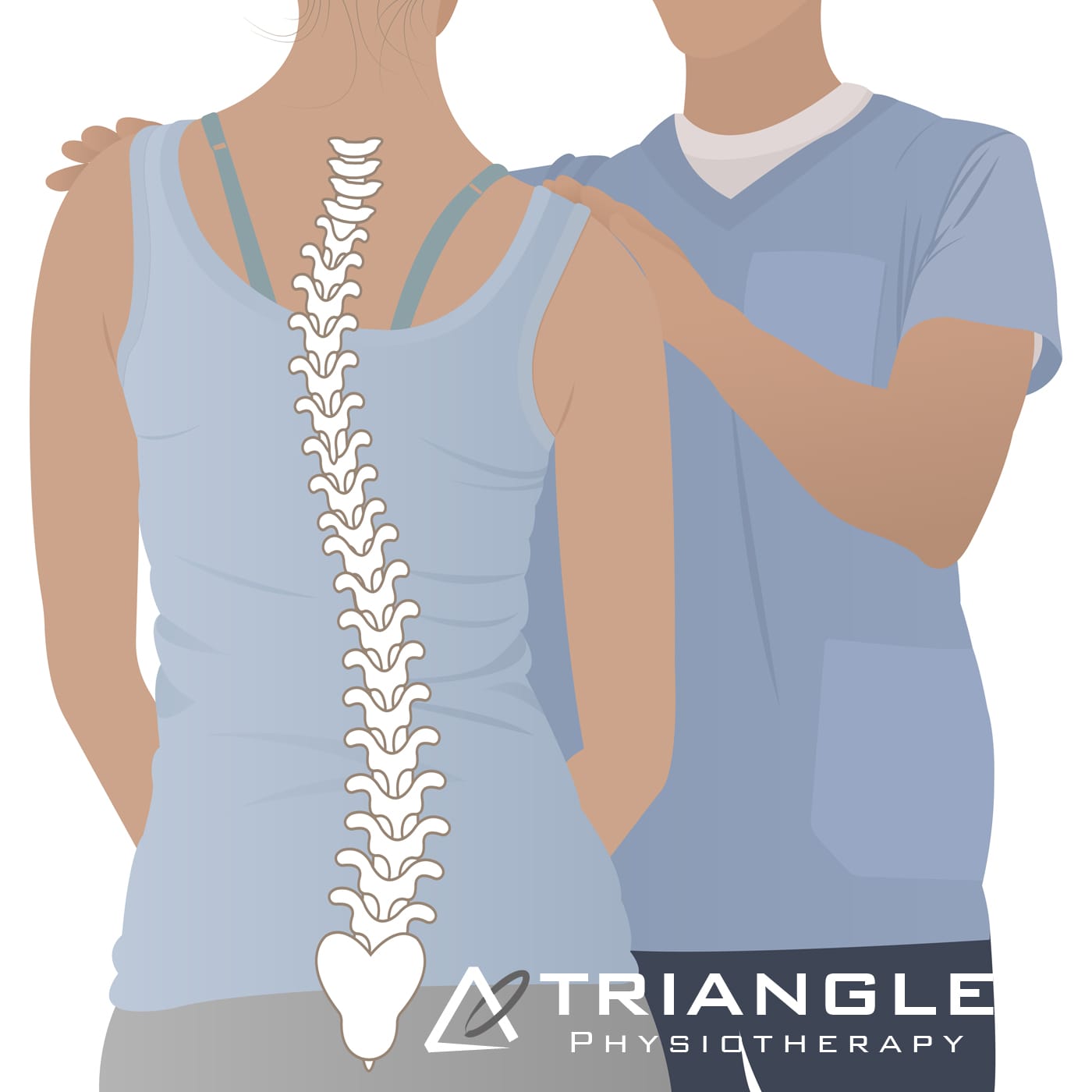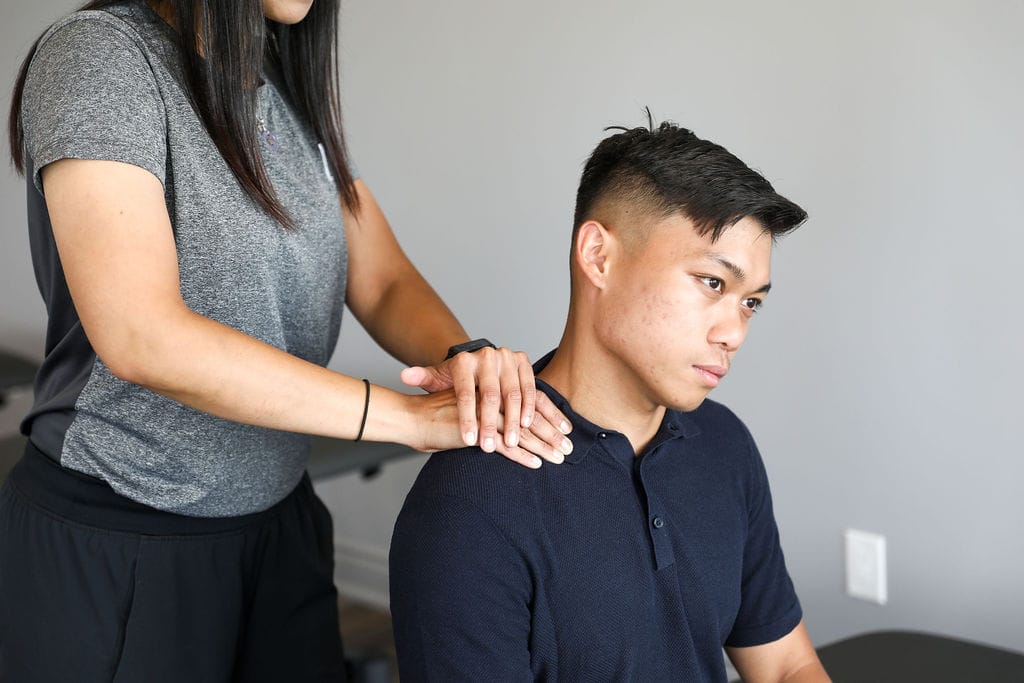Low back pain is a common issue that many people face at some point in their lives. Whether it’s due to a sedentary lifestyle, poor posture, or an acute injury, it can be incredibly debilitating. While there are various treatments available, including medication and physical therapy, one of the most effective ways to manage and alleviate low back pain is through exercise. But not just any exercise—specific exercises can help strengthen your back, improve flexibility, and reduce discomfort.
So, what are the best exercises for low back pain? Let’s break it down into a few key categories and discuss some exercises that can be beneficial.

1. Core Strengthening Exercises
A strong core is essential for supporting your lower back. When your core muscles are weak, other muscles, including those in your back, have to work harder, which can lead to pain and discomfort. Here are a few core-strengthening exercises:
- Planks: This exercise targets your entire core. Start by lying face down and then lift your body up onto your elbows and toes. Keep your body in a straight line from head to heels. Hold this position for 20-30 seconds, gradually increasing the time as you get stronger.
- Bridges: Lie on your back with your knees bent and feet flat on the floor. Lift your hips towards the ceiling, squeezing your glutes at the top. Lower your hips back down slowly. Perform 10-15 repetitions.
- Bird Dogs: Start on your hands and knees. Extend one leg straight back while simultaneously reaching the opposite arm forward. Hold for a few seconds, then switch sides. Aim for 10-15 repetitions per side.

2. Flexibility and Stretching Exercises
Increasing flexibility can help alleviate tension in your lower back and improve your overall range of motion. Here are some stretches that can help:
- Child’s Pose: Kneel on the floor, then sit back on your heels and reach your arms forward on the floor, lowering your chest towards the ground. Hold this position for 20-30 seconds.
- Cat-Cow Stretch: Begin on your hands and knees. Arch your back upwards like a cat (Cat Pose), then dip your back down while lifting your head and tailbone towards the ceiling (Cow Pose). Repeat this sequence 10-15 times.
- Hamstring Stretch: Sit on the floor with one leg extended straight and the other bent so that the sole of the foot is against your inner thigh. Reach towards your extended foot while keeping your back straight. Hold for 20-30 seconds, then switch legs.
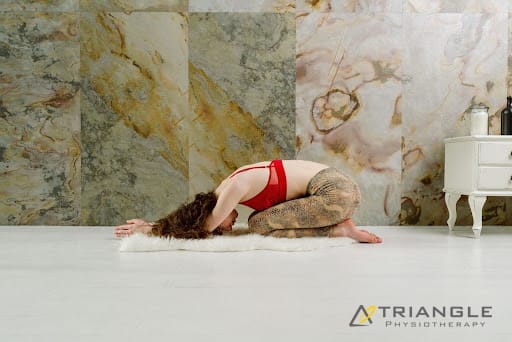
3. Strengthening Exercises for the Lower Back
Strengthening the muscles in your lower back can help support your spine and reduce pain. Here are a few exercises to consider:
- Supermans: Lie face down on the floor with your arms extended in front of you. Lift your arms, chest, and legs off the ground simultaneously, squeezing your lower back muscles. Hold for a few seconds, then lower back down. Perform 10-15 repetitions.
- Back Extensions: Lie face down with your hands by your sides or behind your head. Slowly lift your chest off the ground, keeping your legs and pelvis in contact with the floor. Hold for a few seconds before lowering back down. Aim for 10-15 repetitions.
- Pelvic Tilts: Lie on your back with your knees bent and feet flat on the floor. Flatten your lower back against the floor by tightening your abdominal muscles and tilting your pelvis upwards. Hold for a few seconds before relaxing. Perform 10-15 repetitions.
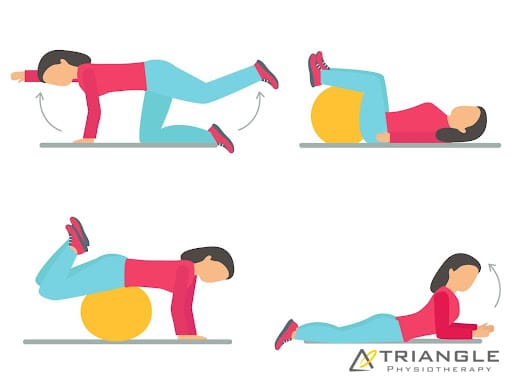
4. Low-Impact Aerobic Exercises
Aerobic exercise can improve blood flow to your back, promote healing, and enhance overall fitness. Low-impact exercises are particularly beneficial for those with back pain:
- Walking: Regular walking is a simple and effective way to get aerobic exercise without putting too much strain on your back. Aim for 20-30 minutes most days of the week.
- Swimming: Swimming provides a full-body workout while minimizing stress on the spine. The water’s buoyancy supports your body, allowing you to exercise without high-impact stress.
- Stationary Cycling: Using a stationary/recumbent bike can help improve cardiovascular fitness and strengthen the muscles around your lower back. Make sure the bike is properly adjusted to avoid strain.
5. Important Considerations
Before starting any new exercise routine, it’s important to consult with a healthcare professional, especially if you have chronic or severe back pain. They can help ensure that the exercises you choose are appropriate for your specific condition.
Additionally, when performing exercises for low back pain, focus on maintaining proper form and avoid movements that exacerbate your pain. Start slowly and gradually increase the intensity and duration of your workouts as you build strength and flexibility.
Incorporating the right exercises into your routine can be a game-changer for managing and reducing low back pain. Core strengthening, flexibility and stretching, lower back strengthening, and low-impact aerobic exercises all play a crucial role in alleviating discomfort and improving overall back health. Remember, consistency is key, and listening to your body is essential. With the right approach, you can find relief and improve your quality of life.
Are you ready to take control of your back pain? Book an appointment with one of our physiotherapists in Toronto or chiropractors in Toronto.
Our Downtown Toronto Physiotherapy Clinic is located conveniently in King West Village at 980 King Street West, Toronto, M6K 3N2 with free parking available.
Finding relief from low back pain often involves targeted exercises and professional guidance. If you’re seeking expert help, consider physiotherapy in Etobicoke, Oakville, North York, Toronto, Lawrence Park, Queens Quay, Erin Mills, Mississauga, or Liberty Village. Skilled physiotherapists in these locations can create a customized exercise plan to help you manage back pain and improve your quality of life.
If you are considering chiropractic care in Oakville and have looked through Google to find a doctor to help you you have likely found countless options. This is when it becomes challenging to pick the chiropractor that is best for YOU. The next question you have probably asked yourself is what makes one Oakville Chiropractor different from the next, or “How do I find the best chiropractor for me?”
While this can feel like a daunting task, there are a few things that can set one chiropractor apart from another. These tips will go a long way in helping you find the best chiropractor for you in Oakville, and as a result, lead to better results for your health.
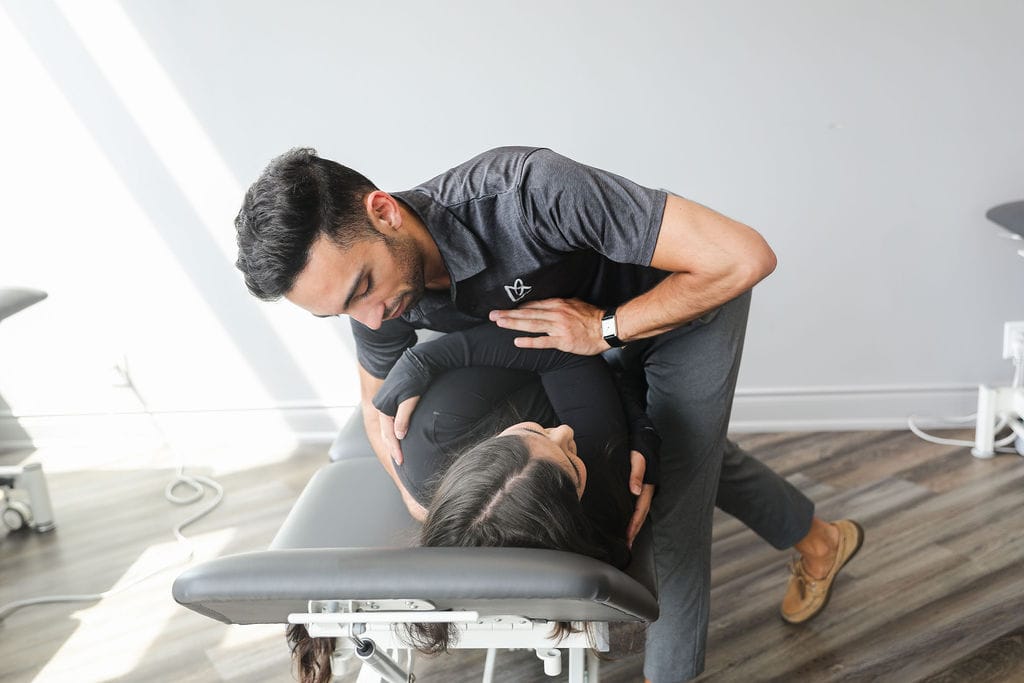
Tips for finding the best chiropractor in Oakville:
1. Start by asking trusted friends and relatives. Ask these people about their experiences with different chiropractors and who they would recommend to you. Referrals speak a lot about the practices of different chiropractic clinics.
2. Look up the online reviews for the clinics recommended to you or the ones you have looked up online during your search. Look for reviews on the chiropractor as well as the general customer service of the clinics.
3. Once you have narrowed your search, give the chosen clinic a call and ask for the chiropractor’s hours and availability to book an assessment and future follow-ups. This ensures that the timings match your availability.
4. When looking for a chiropractor many people don’t realize that there are several different techniques that they can use. The chiropractors at Triangle Physiotherapy are rehab-focused and their treatment style involves manual therapy, exercise prescription, and education.
When should I look into chiropractic care?
There are several reasons to seek chiropractic care. Back pain, neck pain, and headache are the most common reasons why patients first consult a chiropractor. Aside from these reasons, work, car accidents, sports injuries, household chores, and even the stress of daily living can cause painful joint and spinal problems. Remember, even if you do not have painful symptoms, chiropractic care can help you maintain a healthy spine and optimal joint function. Our chiropractors in Etobicoke, chiropractors in Mississauga, chiropractors in Oakville, and chiropractors in Toronto are skilled healthcare practitioners who can relieve your symptoms and get you back to doing what you love, pain-free.
What is a treatment session with a chiropractor like?
An initial visit with your Chiropractor usually involves a thorough history taking and assessment of your condition, in addition to an initial treatment to help set you on your road to recovery. Follow-up appointments will usually involve substantial manual treatment of your muscles and joints, as well as some therapeutic machines (e.g. Shockwave Therapy), acupuncture, and a home exercise program as needed. The Chiropractor may also recommend that you see a massage therapist to complement your treatment plan.
We hope this article has been helpful to you. While one chiropractor may be the best for one particular person you may find that another is the best for you. Doing your research can go a long way in the decision-making process.
If you have any further questions please feel free to contact our Oakville team today at Triangle Physiotherapy.
Our More Locations
Physiotherapy Etobicoke | Physiotherapy Oakville | Physiotherapy North York | Physiotherapy Toronto | Physiotherapy Lawrence Park | Physiotherapy Mississauga | Physiotherapy Queens Quay | Physiotherapy Mississauga Erin Mills | Physiotherapy Liberty Village
How do I book an appointment with a chiropractor near me?
Click HERE to book an appointment with a chiropractor at one of our eight locations.
- Chiropractor Etobicoke – Triangle Physiotherapy Etobicoke
- Oakville Chiropractic Clinic – Triangle Physiotherapy Oakville
- Chiropractic North York – Triangle Physiotherapy North York
- Mississauga Chiropractic Clinics – Triangle Physiotherapy Mississauga
- Downtown Chiropractic Clinics – Triangle Physiotherapy King West
- Uptown Chiropractic Clinics – Triangle Physiotherapy Lawrence Park
- Chiropractic Clinic Downtown Toronto – Triangle Physiotherapy Queens Quay
- Chiropractor Mississauga – Triangle Physiotherapy Erin Mills
Finding the right chiropractor in Oakville is essential for effective care and recovery. If you’re also considering physiotherapy for a holistic approach to your health, explore options for physiotherapy in Etobicoke, Oakville, North York, Toronto, Lawrence Park, Queens Quay, Erin Mills, Mississauga, or Liberty Village. Experienced physiotherapists in these areas can complement chiropractic care and help you achieve optimal wellness.
Chiropractic care focuses on the diagnosis and treatment of mechanical disorders of the musculoskeletal system, particularly the spine. Chiropractors use manual manipulation and other techniques to treat conditions such as back pain, neck pain, headaches, and other musculoskeletal issues. While chiropractic care may benefit some individuals, it’s essential to note that its effectiveness can vary from person to person, and it may not be suitable for everyone.
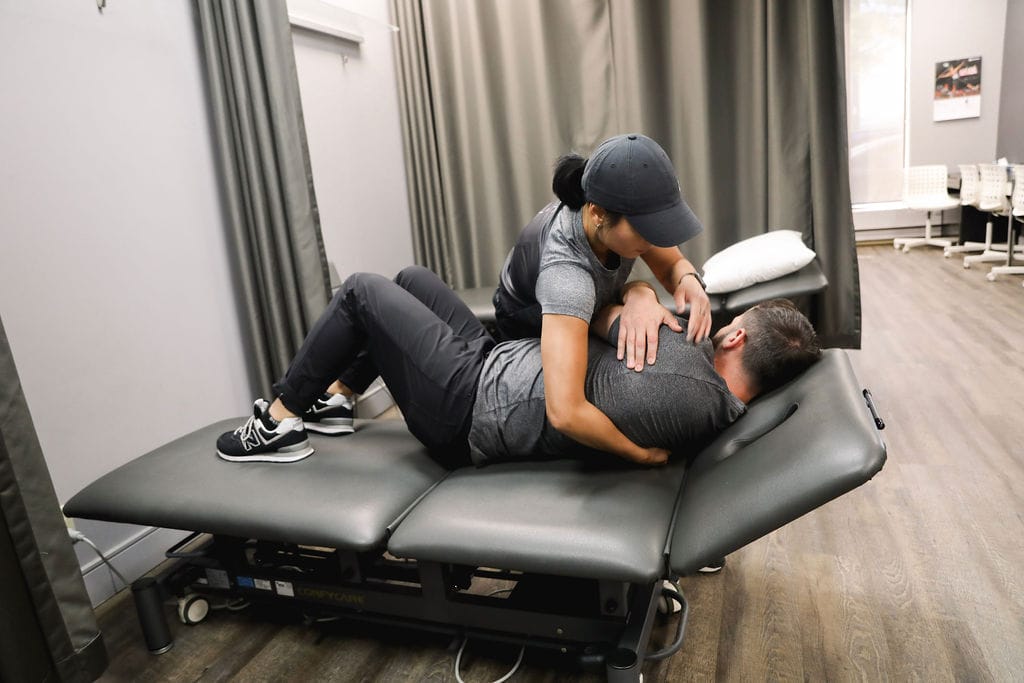
Here are some groups of people who may potentially benefit from chiropractic care:
- Individuals with Back Pain: Chiropractic care is often sought by people experiencing acute or chronic back pain. Spinal adjustments performed by chiropractors may help alleviate pain and improve mobility.
- Neck Pain Sufferers: Chiropractic adjustments may also be used to address neck pain, especially if it is related to issues with the cervical spine.
- Headache and Migraine Sufferers: Some people find relief from headaches and migraines through chiropractic care, particularly if the issues are related to tension or misalignments in the spine.
- Joint Pain and Mobility Issues: Chiropractors may work on various joints in the body, not just the spine. People with joint pain or mobility issues in the shoulders, hips, knees, or other joints may seek chiropractic care.
- Sports Injuries: Athletes often turn to chiropractors for the treatment of sports-related injuries. Chiropractic care may help with the recovery process and improve overall athletic performance.
- Pregnant Women: Some pregnant women seek chiropractic care to help manage musculoskeletal changes that occur during pregnancy. Chiropractors may use gentle techniques to address discomfort and pain.
- Postural Issues: Individuals with poor posture or those whose daily activities contribute to spinal misalignments may benefit from chiropractic adjustments to improve posture and prevent associated issues.
- Chronic Conditions: While chiropractic care is not a cure for chronic conditions, some individuals with conditions like osteoarthritis or fibromyalgia may find relief from certain symptoms through chiropractic treatments.
What is the treatment approach of the chiropractors at Triangle Physiotherapy?
The chiropractors at Triangle Physiotherapy have a rehab-focused approach to treatment. They believe in evidence-based treatment solutions are are able to carry forward the treatment plan proposed by your physiotherapist.
How do I book an appointment with a chiropractor near me?
Click HERE to book an appointment with a chiropractor at one of our eight locations.
- Chiropractor Etobicoke – Triangle Physiotherapy Etobicoke
- Oakville Chiropractic Clinic – Triangle Physiotherapy Oakville
- Chiropractic North York – Triangle Physiotherapy North York
- Mississauga Chiropractic Clinics – Triangle Physiotherapy Mississauga
- Downtown Chiropractic Clinics – Triangle Physiotherapy King West
- Uptown Chiropractic Clinics – Triangle Physiotherapy Lawrence Park
- Chiropractic Clinic Downtown Toronto – Triangle Physiotherapy Queens Quay
- Chiropractor Mississauga – Triangle Physiotherapy Erin Mills
Chiropractic care can benefit individuals dealing with back pain, joint issues, and overall mobility concerns, often working well in conjunction with physiotherapy. If you are looking for professional physiotherapy services to complement your chiropractic care, there are clinics in physiotherapy Etobicoke, Oakville, North York, Toronto, Lawrence Park, Queens Quay, Erin Mills, Mississauga, and Liberty Village. These locations offer comprehensive care and personalized treatment plans to help you achieve optimal health and wellness.
Back pain is one of the most common ailments we see in our practice.
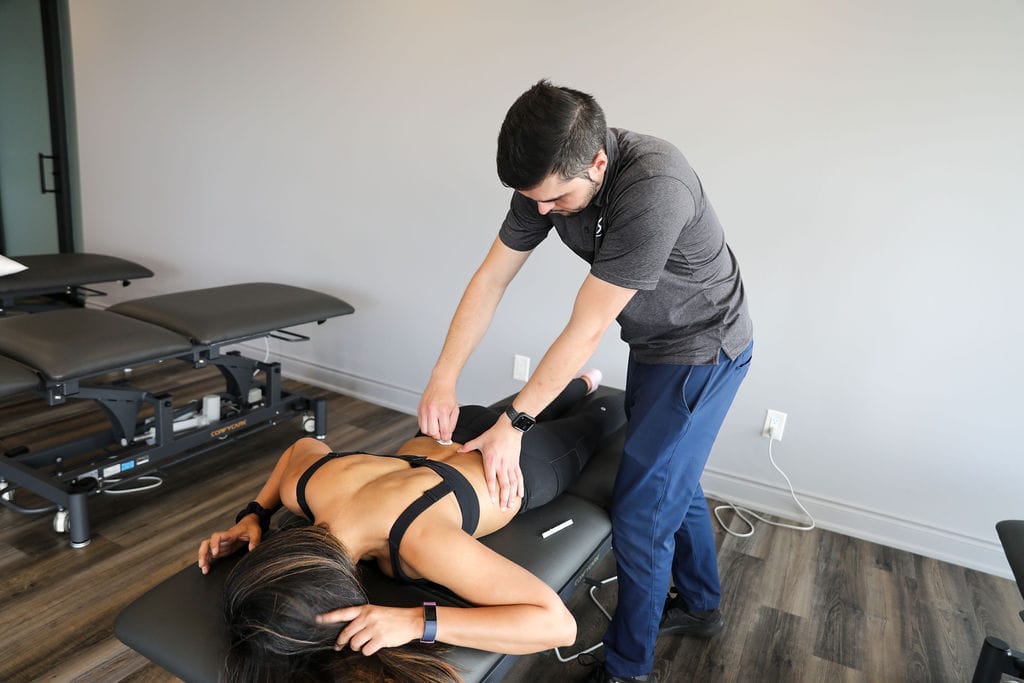
Here are some self-care measures you can consider to manage or prevent recurrence:
- Rest: Give your back a break by avoiding activities that may exacerbate the pain. However, avoid prolonged bed rest, as it can lead to stiffness and muscle weakness. Gentle movement and stretching are usually better than complete immobility.
- Ice and Heat: Apply ice packs to the affected area for the first 48 hours to reduce inflammation, then switch to heat therapy (e.g., heating pads) to relax tight muscles. Use each for 15-20 minutes at a time.
- Over-the-Counter Pain Relief: Non-prescription pain relievers such as ibuprofen (Advil) or acetaminophen (Tylenol) can help alleviate pain and reduce inflammation. Follow the recommended dosage and consult a healthcare professional if you have concerns.
- Exercise: Gentle, low-impact exercises can help strengthen your back and improve flexibility. Activities like swimming, walking, or yoga can be beneficial. Consult a physical therapist for guidance on appropriate exercises.
- Posture: Maintain good posture when sitting and standing to reduce strain on your back. Use ergonomic chairs and accessories if needed, and avoid prolonged periods of sitting.
- Proper Lifting Technique: When lifting heavy objects, bend at your knees and hips instead of your waist, and use your legs to lift while keeping the object close to your body.
- Core Strengthening: Strengthening your core muscles (abdominals, obliques, and lower back) can provide better support for your spine. Pilates and specific core exercises can help with this.
- Sleep: Ensure you have a comfortable mattress and pillow that support your spine. Sleeping on your side with a pillow between your knees can help maintain proper alignment.
- Stress Reduction: Stress can contribute to muscle tension and pain. Techniques such as meditation, deep breathing exercises, and relaxation techniques may help manage stress.
- Weight Management: Maintaining a healthy weight can reduce the strain on your back and decrease the risk of back pain.
- Physiotherapy: A physical therapist can provide personalized exercises and techniques to address your specific back pain issues.
- Chiropractic Care or Massage Therapy: Some people find relief through chiropractic adjustments or therapeutic massages. Consult with professionals in these fields to see if it’s appropriate for your condition.
- Avoid Smoking: Smoking can impair blood flow to the spine and hinder the healing process.
If your back pain persists, worsens, or is accompanied by other concerning symptoms (such as numbness, tingling, weakness, or loss of bladder or bowel control), seek immediate medical attention. Always consult a healthcare provider before starting any new exercise or treatment regimen, especially if you have underlying health conditions or are taking medications. They can provide a more accurate diagnosis and recommend the best treatment options for your specific situation.
How do I book an appointment with a physiotherapist or chiropractor near me?
Click HERE to book an appointment with a physiotherapist or chiropractor at one of our eight locations.
- Physiotherapy Etobicoke – Triangle Physiotherapy Etobicoke
- Oakville Physiotherapy Clinic – Triangle Physiotherapy Oakville
- Physiotherapy North York – Triangle Physiotherapy North York
- Mississauga Physiotherapy Clinics – Triangle Physiotherapy Mississauga
- Downtown Physiotherapy Clinics – Triangle Physiotherapy King West
- Uptown Physiotherapy Clinics – Triangle Physiotherapy Lawrence Park
- Physiotherapy Clinic Downtown Toronto – Triangle Physiotherapy Queens Quay
- Physiotherapy Clinics Mississauga – Triangle Physiotherapy Erin Mills
“Relieving back pain requires a comprehensive approach that includes targeted physiotherapy. Triangle Physiotherapy offers expert services across the GTA, including Physiotherapy in Etobicoke, Oakville, North York, Toronto, Lawrence Park, Queens Quay, Erin Mills, Mississauga, and Liberty Village. Our experienced physiotherapists can help you find effective solutions to alleviate your back pain and improve your quality of life.”
Physiotherapy can play a role in managing scoliosis, but it is important to understand that it is not a cure for the condition. Scoliosis is a complex spinal deformity characterized by an abnormal curvature of the spine. The treatment of scoliosis depends on various factors, including the severity of the curvature, the age of the individual, and other medical considerations.
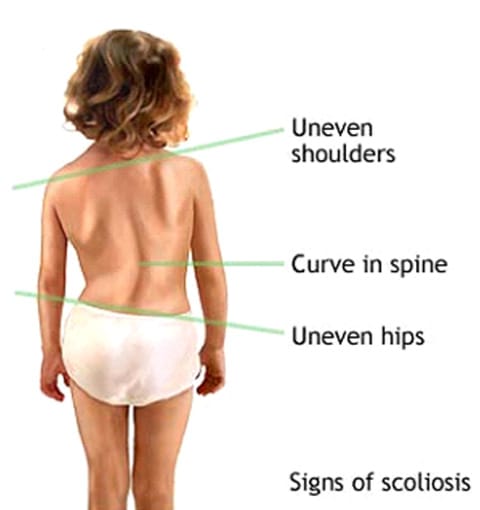
How do I know if I have scoliosis?
While it’s possible to have scoliosis without experiencing noticeable symptoms, there are some signs and symptoms that may indicate the presence of scoliosis.
- Uneven Shoulders: Stand in front of a mirror with your arms hanging naturally at your sides. If one shoulder appears higher than the other, it could be a sign of scoliosis.
- Uneven Hips: When standing, if one hip appears to be higher or more prominent than the other, it may be a sign of scoliosis.
- Asymmetrical Waist: An uneven waistline, where one side of the waist is higher or more pronounced than the other, can be a sign of scoliosis.
- Leaning to One Side: Some people with scoliosis may unconsciously lean to one side when standing or walking.
- Visible Spinal Curvature: In more severe cases, you or someone else may notice a visible curve or twist in the spine when looking at your back. This is often more noticeable when bending forward at the waist.
- Back Pain or Discomfort: Scoliosis can sometimes cause back pain, particularly if the curvature is significant or if it progresses rapidly.
- Clothing Fit: You may notice that your clothing doesn’t hang evenly or that one side of your shirt or dress appears longer than the other.
- Uneven Leg Length: Scoliosis can sometimes give the appearance of uneven leg lengths due to pelvic rotation caused by the spinal curvature.
How is Scoliosis diagnosed?
Scoliosis is typically diagnosed through a combination of methods, including a physical examination, medical history assessment, and imaging studies. Here is a step-by-step explanation of the diagnosis process:
- Medical History and Symptom Assessment: The first step in diagnosing scoliosis involves discussing your medical history and any symptoms you may be experiencing with a healthcare provider. They will ask about any family history of scoliosis, previous medical conditions, and any pain or discomfort you may have noticed.
- Physical Examination: A physiotherapist, will conduct a physical examination. During this examination, they will:
- Ask you to bend forward at the waist with your feet together and arms hanging down. This helps the healthcare provider assess the curvature of your spine. They will look for any asymmetry or abnormal curvature.
- Examine your back while you are standing to check for any signs of scoliosis, such as uneven shoulders, hips, or a noticeable curve in the spine.
- Measure the degree of spinal curvature using a scoliometer, a specialized instrument that quantifies the angle of spinal rotation.
- Imaging Studies: If the physical examination suggests the presence of scoliosis or if there are other concerning factors, imaging studies may be ordered to confirm the diagnosis and assess the severity of the curvature. Common imaging techniques used include:
- X-rays: X-rays provide detailed images of the spine and are used to measure the angle of the spinal curvature (Cobb angle). X-rays are essential for determining the severity of scoliosis and planning treatment.
- MRI (Magnetic Resonance Imaging): In some cases, an MRI may be recommended, especially if there are concerns about spinal cord compression or underlying spinal abnormalities. MRI provides detailed soft tissue images.
- Additional Evaluation: Depending on the findings from the physical examination and imaging studies, additional tests or evaluations may be necessary. This can include assessing lung function if the scoliosis is severe, as it can affect respiratory function in some cases.
How can physiotherapy help Scoliosis?
Physiotherapy can play a beneficial role in the management of scoliosis, particularly in helping to improve posture, reduce pain, and enhance overall function. While physiotherapy cannot cure scoliosis, it can be a valuable component of a comprehensive treatment plan. Here are ways in which physiotherapy can help individuals with scoliosis:
- Pain Management: Many individuals with scoliosis experience back pain and discomfort. Physiotherapists can employ various techniques to alleviate pain, including manual therapy, soft tissue mobilization, and modalities like heat or ice therapy.
- Postural Improvement: Physiotherapists can work with individuals to improve their posture. Proper posture can help prevent the progression of scoliosis and reduce the strain on the spine and surrounding muscles.
- Muscle Strengthening: Specific exercises are prescribed to strengthen the muscles around the spine. Strengthening these muscles can provide better support for the spine and potentially help improve spinal alignment.
- Range of Motion: Physiotherapy can help maintain or improve the range of motion in the spine and other affected joints. This is important for overall mobility and function.
- Breathing Exercises: In cases where scoliosis affects respiratory function, physiotherapists can teach breathing exercises to improve lung capacity and respiratory function.
- Core Stability: Core strengthening exercises can enhance the stability of the spine and help individuals maintain better posture.
- Patient Education: Physiotherapists can educate individuals with scoliosis on their condition, treatment options, and self-management techniques. This education empowers individuals to take an active role in their care.
- Bracing Support: For individuals prescribed with a brace to manage scoliosis, physiotherapists can provide guidance on wearing and adjusting the brace properly to achieve the best results.
- Emotional Support: Coping with scoliosis, especially during adolescence, can be emotionally challenging. Physiotherapists can provide emotional support and help individuals develop a positive body image and self-esteem.
- Collaboration with Other Healthcare Providers: Physiotherapists often work as part of a multidisciplinary team that includes orthopedic surgeons, chiropractors, and other healthcare professionals. They collaborate to ensure comprehensive care for individuals with scoliosis.
How do I book an appointment at a Physiotherapy Clinic near me?
Click HERE to book an appointment with a physiotherapist or chiropractor at one of our eight locations.
- Physiotherapy Etobicoke – Triangle Physiotherapy Etobicoke
- Oakville Physiotherapy Clinic – Triangle Physiotherapy Oakville
- Physiotherapy North York – Triangle Physiotherapy North York
- Mississauga Physiotherapy Clinics – Triangle Physiotherapy Mississauga
- Downtown Physiotherapy Clinics – Triangle Physiotherapy King West
- Uptown Physiotherapy Clinics – Triangle Physiotherapy Lawrence Park
- Physiotherapy Clinic Downtown Toronto – Triangle Physiotherapy Queens Quay
- Physiotherapy Clinics Mississauga – Triangle Physiotherapy Erin Mills
“Scoliosis can be managed effectively with the right physiotherapy approach. Triangle Physiotherapy offers expert services across the GTA, including Physiotherapy in Etobicoke, Oakville, North York, Toronto, Lawrence Park, Queens Quay, Erin Mills, Mississauga, and Liberty Village. Our experienced physiotherapists can help you develop a personalized treatment plan to manage scoliosis and improve your quality of life.”
Stretching can be beneficial for relieving lower back pain and improving flexibility and mobility.
What are some of the best stretches for the lower back?
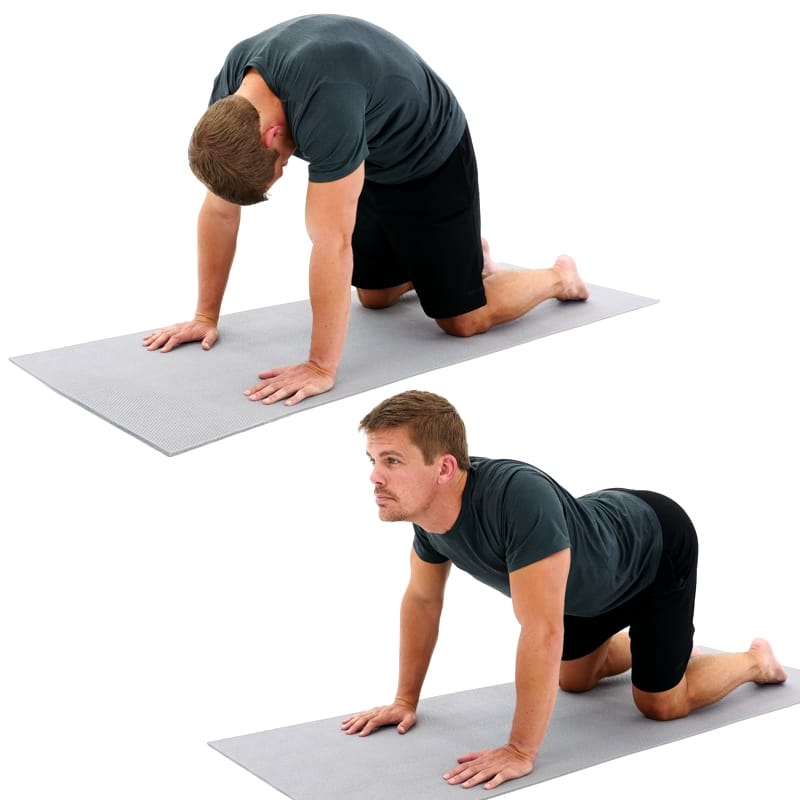
Cat-Cow is one of the best stretches for the low back which gentle flow between two poses that warms the body and brings flexibility to the spine. It stretches the back torso and neck, and softly stimulates and strengthens the abdominal organs.
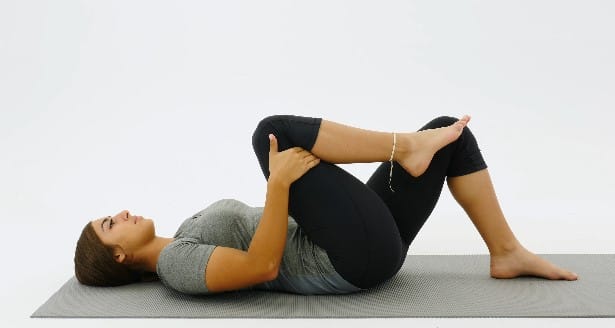
Knee-to-Chest Stretch: Lie on your back with your knees bent. Slowly bring one knee toward your chest, grasping it with your hands and gently pulling it closer. Hold for 20-30 seconds, then repeat with the other leg.
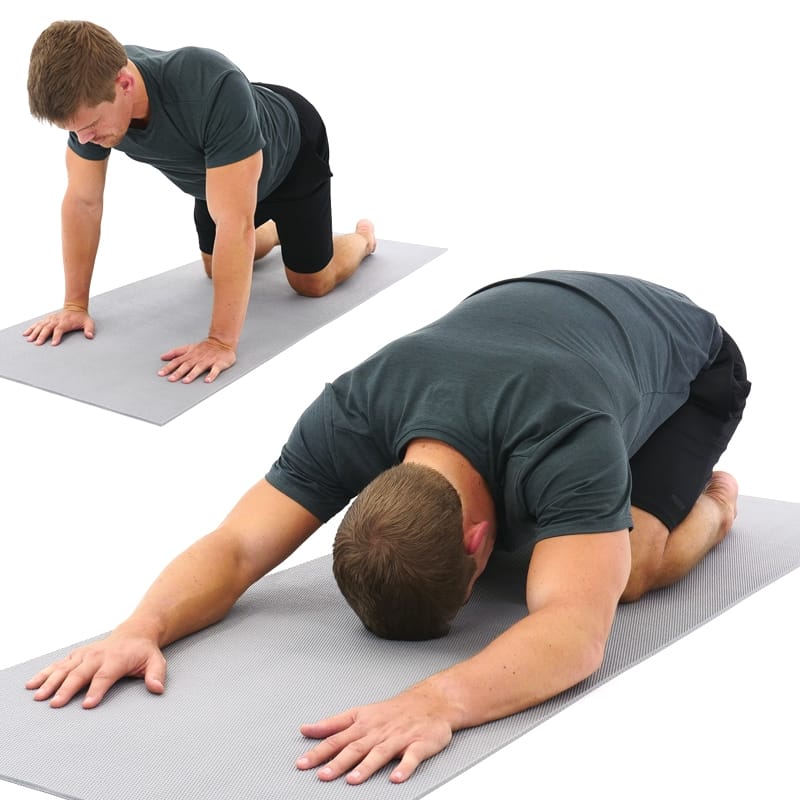
Child’s Pose is one of the best stretches for the low back and provides a gentle stretch for the back, hips, thighs, and ankles. It can help relieve back pain. Start on your hands and knees, then sit back on your heels while extending your arms forward and lowering your forehead to the ground. This stretch gently stretches the lower back.
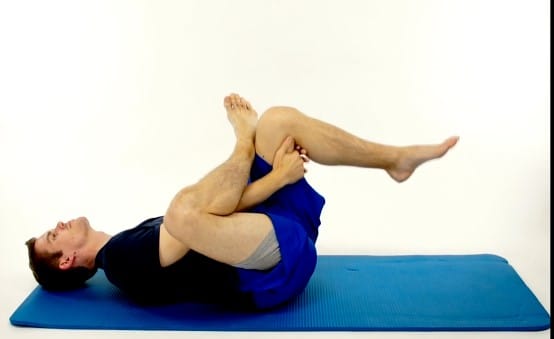
Piriformis Stretch: Lie on your back with your knees bent. Cross one ankle over the opposite knee, then gently pull the uncrossed leg towards your chest until you feel a stretch in your buttocks. Hold for 20-30 seconds and switch sides.

Figure 4 Stretch: Lie on the ground or treatment table with your legs extended in front of you. Cross one ankle over the opposite knee, then gently lean forward, keeping your back straight, until you feel a stretch in your buttocks and outer hip. Hold for 20-30 seconds and switch sides.
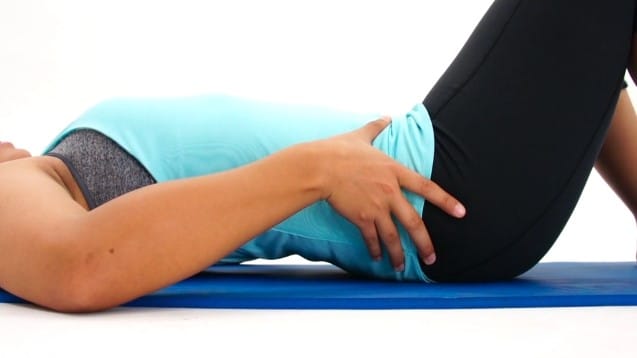
Pelvic Tilt: Lie on your back with your knees bent and feet flat on the ground. Gently flatten your lower back against the floor by tilting your pelvis upward. Hold for a few seconds, then release. Repeat 10-15 times.
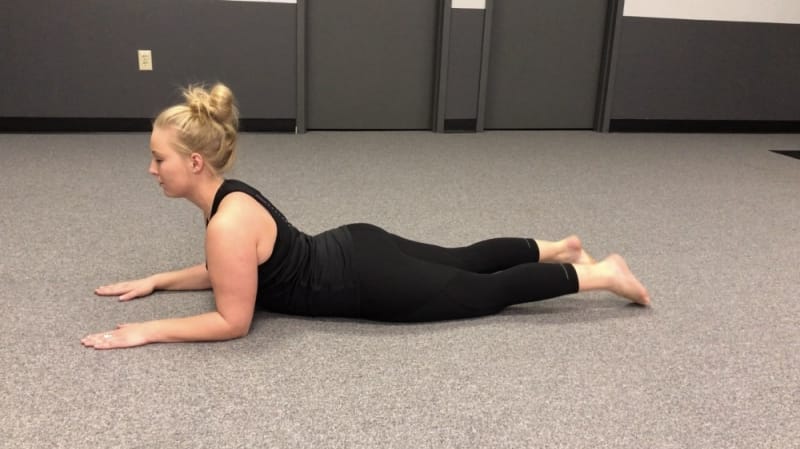
Sphinx Pose: Lie on your stomach and prop yourself up on your forearms, keeping your elbows directly beneath your shoulders. Press your forearms into the ground to lift your upper body, arching your back gently. Hold for 20-30 seconds.
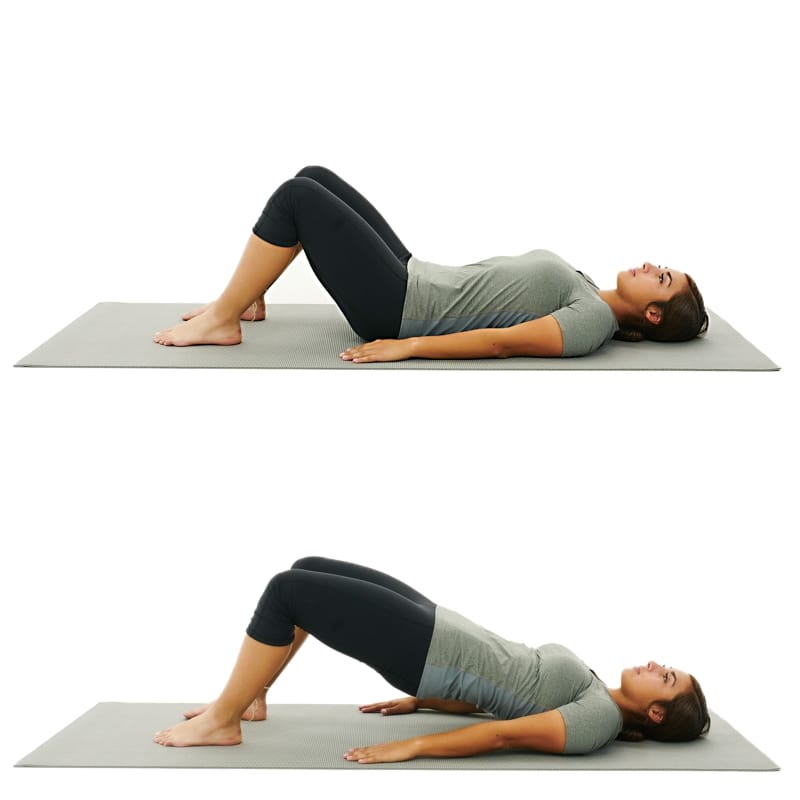
Lie on your back with your knees bent, feet flat on the floor. Lift your hips off the ground, forming a straight line from knees to shoulders.
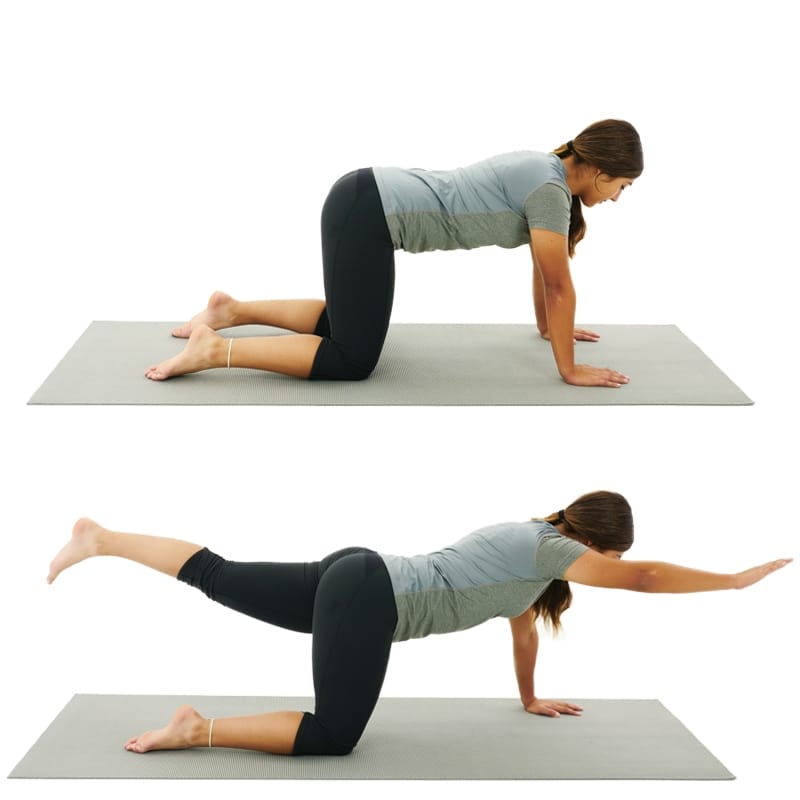
Bird Dog: While in a crawling position, tighten/brace at your abdominal muscles and then slowly lift a leg and opposite arm upwards. Your hip will move into a hip extension on the way up. Lower leg and arm down and then repeat with the opposite side.
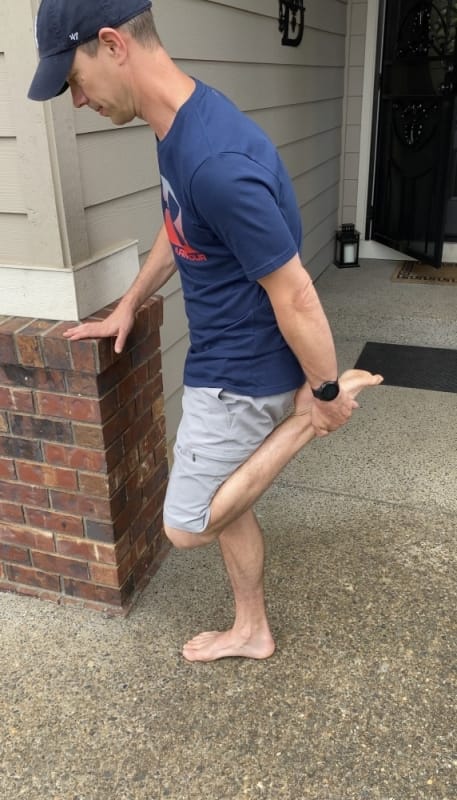
Standing Quadriceps Stretch: Stand tall and hold onto a stable object for balance. Bend one knee, bringing your heel toward your buttocks, then grasp your foot with your hand. Hold for 20-30 seconds and switch legs.
Should I stretch my lower back if it hurts?
Doing regular stretching exercises can help with lower back pain by maintaining your posture, strengthening your back and abdominal muscles, and improving flexibility.
What is the best position to sit in with lower back pain?
The best position to sit in with lower back pain is with a back support such as a rolled-up towel or lumbar roll, at the curve of your back. Keep your hips and knees at a right angle. Use a foot stool if necessary. Your legs must not be crossed and your feet should lie flat on the floor. It is also advisable to stretch and move around as much as possible.
Click HERE to book an appointment with a physiotherapist at one of our eight locations.
- Physiotherapy Etobicoke – Triangle Physiotherapy Etobicoke
- Oakville Physiotherapy Clinic – Triangle Physiotherapy Oakville
- Physiotherapy North York – Triangle Physiotherapy North York
- Mississauga Physiotherapy Clinics – Triangle Physiotherapy Mississauga
- Downtown Physiotherapy Clinics – Triangle Physiotherapy King West
- Uptown Physiotherapy Clinics – Triangle Physiotherapy Lawrence Park
- Physiotherapy Clinic Downtown Toronto – Triangle Physiotherapy Queens Quay
- Physiotherapy Clinics Mississauga – Triangle Physiotherapy Erin Mills
“Stretching is a key component in managing lower back pain effectively. Triangle Physiotherapy offers expert services across the GTA, including Physiotherapy in Etobicoke, Oakville, North York, Toronto, Lawrence Park, Queens Quay, Erin Mills, Mississauga, and Liberty Village. Our experienced physiotherapists can help you develop a personalized stretching routine to alleviate pain and improve your mobility.”
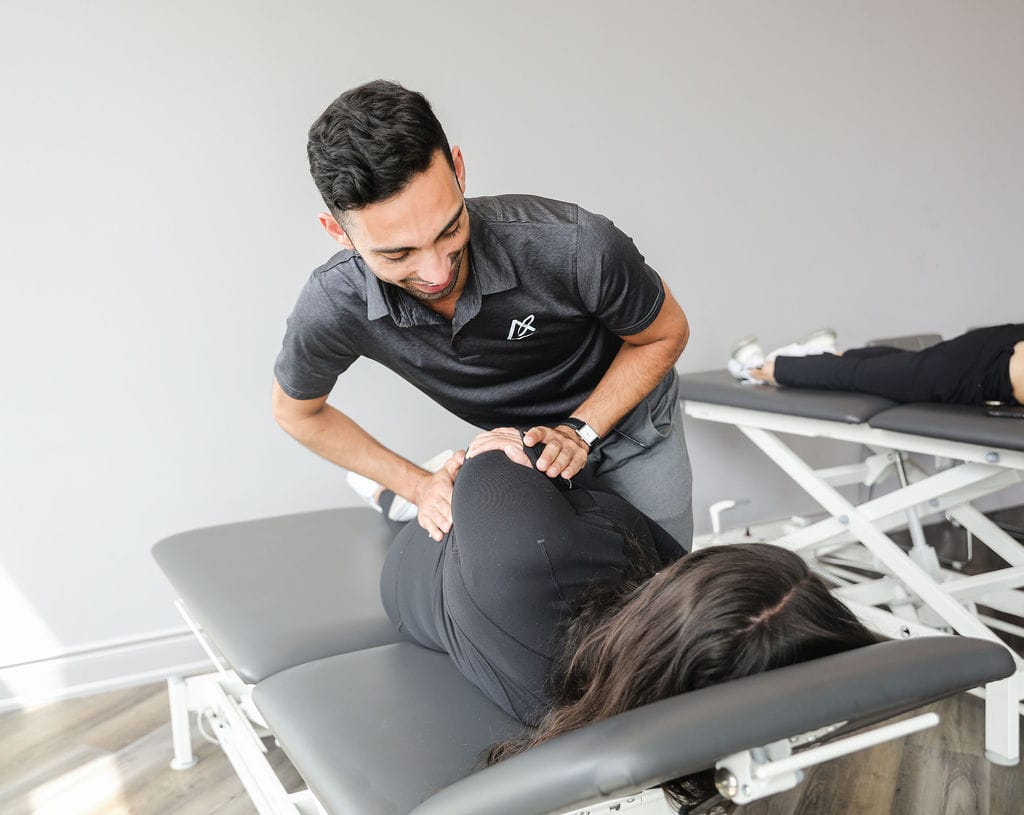
| Definition/Layman’s terms for the condition | Sacroiliac joint dysfunction is a term used to describe the pain derived from the joint. It can be caused in issues with movement and alignment. It usually presents as low back pain. |
| Cause/MOI | SI joint dysfunction can be present during pregnancy when there are many changes to the body (physically, hormonally, etc). It can also be present after trauma to the area by landing on your back or landing with a straight leg causing forces to travel up the leg. |
| Common symptoms | Pain is usually localized over the buttock area where the SIJ is located. It may be a sharp or shooting pain that can refer down the back of the leg, but usually not past the knee. Most people will complain of pain when sitting down, climbing stairs |
| How is it diagnosed clinically? Diagnostically | Clinical diagnosis is based on a combination of subjective history and clinical cluster of objective tests. Subjective history may include pregnancy, direct trauma to the area, landing on a straight leg, pain localized to the buttock area or referring down the leg but not past the knee. Objective tests include a series of maneuvers that may provoke the pain or may show the clinician changes in motor control around the SIJ. |
| Treatment options? | Treatment options usually are conservative in nature and thus physiotherapy is a mainstay in addressing SIJ dysfunction. Pain medications, corticosteroids, taping and braces may also be implemented to help with daily functioning. |
| How physiotherapy can help? | Physiotherapy can help by reducing pain and inflammation, strengthening your core and mobilizing your SIJ. |
| Typical physiotherapy treatment approach-manual therapy, modalities, exercise, etc | Physiotherapy treatment may consist of manual therapy, exercises, education, and modalities. Manual therapy may consist of low back mobilisations, SIJ mobilisations and manipulations to help with pain relief.Exercises may consist of core strengthening and lower extremity strengthening, all in an effort to help provide stability to the area and increase pain free mobility. Contact us to book an appointment for a physiotherapy assessment. |
| Other treatment options | Other treatment options include braces, taping, corticosteroids. |
| Prognosis | SIJ dysfunction has a good prognosis and pregnancy-related SIJ dysfunction will usually resolves within 12 months post-partum. |
| Consequences of not getting it treated/long term effects | Ongoing pain, trouble with sitting, walking/running, trouble with daily activities that involve your lower extremities. |
| Braces that can help | Pelvic belt, SI joint belt. We offer the Sacroloc. |
Click HERE to book an appointment with a physiotherapist or chiropractor at one of our eight locations.
- Physiotherapy Etobicoke – Triangle Physiotherapy Etobicoke
- Oakville Physiotherapy Clinic – Triangle Physiotherapy Oakville
- Physiotherapy North York – Triangle Physiotherapy North York
- Mississauga Physiotherapy Clinics – Triangle Physiotherapy Mississauga
- Downtown Physiotherapy Clinics – Triangle Physiotherapy King West
- Uptown Physiotherapy Clinics – Triangle Physiotherapy Lawrence Park
- Physiotherapy Clinic Downtown Toronto – Triangle Physiotherapy Queens Quay
- Physiotherapy Clinics Mississauga – Triangle Physiotherapy Erin Mills
“Effectively managing SI joint dysfunction requires targeted physiotherapy and expert care. Triangle Physiotherapy offers specialized services across the GTA, including Physiotherapy in Etobicoke, Oakville, North York, Toronto, Lawrence Park, Queens Quay, Erin Mills, Mississauga, and Liberty Village. Our experienced physiotherapists can help you alleviate pain and restore proper function through personalized treatment plans.”
Should I go to a physiotherapist after a car accident?
If you met with a car accident and having problems related to the mobility of your body or if it causes obstacles to function properly and efficiently then you should definitely go for Physical Therapy.
Physical therapists are musculoskeletal experts and may help cure the underlying musculoskeletal injuries that may have occurred after meeting with a car accident. At Triangle Physiotherapy, our Physical Therapists will assure a one-to-one session where they will conduct an extensive whole-body analysis with a target of developing a customized treatment and detailed physical therapy programs which suit best to your condition and individual needs.
What can a physiotherapist do to help after a car accident?
The goal of physical therapy is to help you recover physically and strengthen damaged muscles and tissues.
A Few physical therapy exercise programs would include:
- Manual therapy to mobilize joints, decrease scar tissue, reduce inflammation and enhance healing of tissue.
- Custom exercises to address types of pain like neck and shoulder pain, back pain, spine dysfunction, or weakness.
- Postural training to resolve pain in the neck, shoulders, and back.
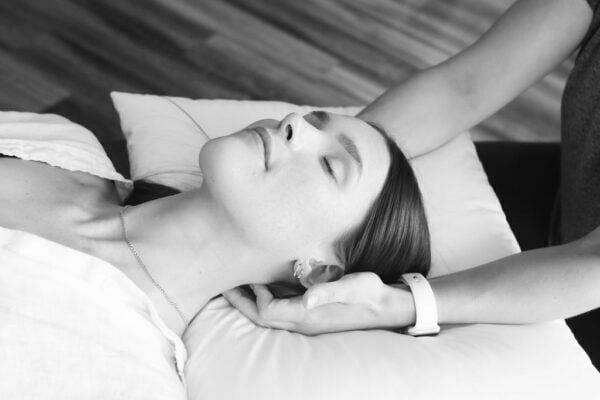
COMMON TYPES OF INJURIES
The list of injuries if you meet with a car accident are as follows:
- Whiplash
- Headaches
- Back Pain
- Neck Pain
- Shoulder Pain
- Knee Pain
What are the common symptoms related to WHIPLASH?
Common symptoms related to whiplash include:
- Stiffness to neck, arms, upper back, and the face.
- Numbness into arms, neck, and upper back.
- Headache, dizziness, nausea.
- Feelings of general weakness.
- Altered and disturbed sleeping habits and patterns.
- Difficulty with concentration.
Is it important to get physiotherapy as soon as possible after a car accident?
Although you may feel the immediate onset of pain or symptoms of injury, these symptoms may bring forth pain and mobility problems over the long haul.
Suppose if you met with a car accident, one may wonder that why is it necessary to get treated with Physiotherapy after an accident? If you’re considering Physiotherapy after a car accident, there are many reasons that you may want to begin or continue with the treatment.
The doctor will recommend that you receive Physiotherapy and you will realize the benefit of rehabilitation after a car accident. You may realize on your own that you can benefit from rehabilitative treatment.
Here’s why you should start Physical Therapy after a car accident:
- Physical Therapy After a Car Accident Can Help You Recover Faster
Going through Physical Therapy after a car accident can help you speed up your recovery time. It can help the body recover its lost strength so that you can reduce the amount of time it takes to improve and fully recover from the injuries caused by car accidents. Time and again patients don’t realize how bad their car accident injuries are until they return to their day-to-day activities.
If you are looking for a physiotherapist to help you with your injuries, our rehabilitation facility is one of the best physiotherapy clinics:
- Physical Therapy Can Help You Recover Better and Prevent Long-term damage
In order to help you recover faster, Physical Therapy programs ensure a better outcome after taking good care and following Physical Therapy exercises. It can also help you or prevent the long-term effects of your injuries like chronic pain and migraines. Unfortunately, car crashes can cause nagging damage if the patient’s injuries are not addressed right away. If you begin physical therapy immediately after your car accident, it’s more expedient to live a pain-free life for years.
- Boosting Mental Health and Improving Quality of Life
Some issues can create a problem after years of being a victim of a car accident and this can seriously affect the quality of life of a person. Physical therapy relieves these issues before becoming a serious health concern for an individual.
- Avoiding Surgery
Every so often injuries caused by car accidents can even require surgery, most injuries or a type of wear and tear but a few injuries, if left rampant, can lead to surgery and costly hospital bills. It is always advised to immediately check-up with a professional for the treatment. This will help with any claims you may wish to make later on. Physical therapy treatment is a much more cost-effective solution to recovery.
There are multiple benefits of physiotherapy and that’s why people are opting for this line of treatment for recovery and overall well-being.
Steps to take after a car accident and a few advantages of Physiotherapy:
- The Type of Injury
Car accident injuries can affect your recovery time and the time period that takes to complete your treatment. One of the most common car accident injuries is whiplash. A whiplash injury occurs when the force of the accident causes your head and neck to jerk violently forward and backward. This can cause the muscles and tendons in your neck to stretch outside their normal range of motion. Whiplash can also affect the spinal column in your neck and disc injuries can be serious. Depends on the intensity of the whiplash, it can take a few months to recover and get the accurate motion of the neck as it was before.
2. The Severity of the Accident
It is more likely to sustain a moderate to severe injury in a more serious car accident, even the smallest of the injury. A more severe accident can cause consequential harm to your body even if you are taking all precautions of car safety like wearing the seatbelt and the airbag deploys. More serious injuries like a dislocated knee or a broken foot can impact your daily routines.
3. Any Previous Injuries
A previous injury can leave behind scar tissue, that impacts how your body heals the new injury. Physiotherapy often takes longer if you have previous injuries, especially if they occur in the same area.
Few factors that effect are:
- The severity of the injury
- Location of the injury
- Patient’s current state of health
- Patient’s treatment goals
- Rate of progress
How can Physiotherapy help if you’ve met with a car accident?
Physiotherapy helps reduce the pain and discomfort usually felt after a car accident injury. A lack of physical activity when recovering from an injury can actually cause stiffness, which can lead to more discomfort when trying to return to your daily activities, so you should always try to keep your body in motion.
“Recovering from a car accident requires targeted physiotherapy to restore mobility and reduce pain. Triangle Physiotherapy offers expert care across the GTA, including Physiotherapy in Etobicoke, Oakville, North York, Toronto, Lawrence Park, Queens Quay, Erin Mills, Mississauga, and Liberty Village. Our experienced team provides personalized rehabilitation plans to help you recover effectively and regain your quality of life.”
Spondylolisthesis is a condition that leads to back pain caused by the instability in the vertebrae. According to an article published in Spine, 6 to 11.5% of the adult population experiences this condition. People who are involved in football or gymnastics are at a higher risk. While we understand that it’s a painful condition to be in, we don’t want you to stop doing what you love and therefore, we suggest you to book an appointment with our expert Physiotherapists at any of our nine rehabilitation clinics across the GTA ( Physiotherapy Etobicoke, Physiotherapy North York, Physiotherapy Mississauga, Physiotherapy King West, Physiotherapy Lawrence Park, Physiotherapy Erin Mills, Physiotherapy Queen Quay, Physiotherapy Oakville, Liberty Village).
When it comes to spondylolisthesis, exercise plays a very important role in improving the condition. However, one must remember here that not all exercises are safe and can even further damage the spine. We are going to make you learn Spondylolisthesis exercises that must be avoided for an effective Spondylolisthesis treatment. Before we move to exercises to avoid in spondylolisthesis, we must first understand what is spondylolisthesis.
Spondylolisthesis – an overview
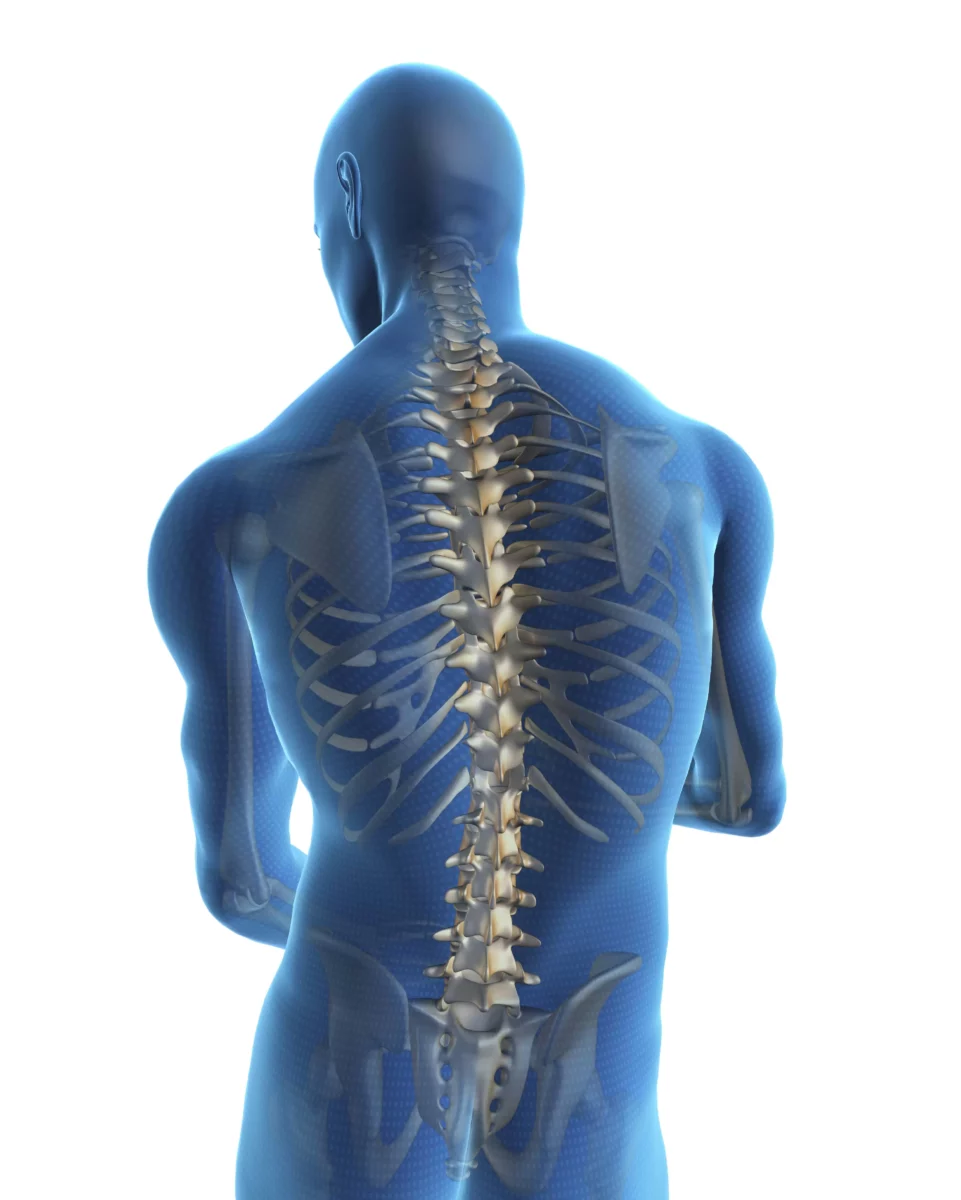
Is is usually caused by degeneration of the vertebrae or disc, due to trauma, injury or genetics. It makes a piece of the spinal bone, also known as vertebrae slips out of alignment and onto the bone below it. Spondylolisthesis usually occurs at the fifth lumbar vertebrae. As reported by the Cleveland Clinic, spondylolisthesis is one of the most common causes of back pain for teen athletes. Having said that, degenerative spondylolisthesis also results in low back pain in people older than 40 years.
Specific spondylolisthesis exercises are suggested to alleviate the pain and discomfort thereby improving the function and quality of life. Let’s now talk about the symptoms of spondylolisthesis.
Symptoms of Spondylolisthesis
Most of the spondylolisthesis symptoms include pain in the lower back that gets worse with standing and hyperextension. The pain may appear like a muscle strain. There are some other symptoms of spondylolisthesis that one must look out for –
• Tightness in hamstring
• Pain in posterior buttock
• Neurological changes including tingling down the legs and numbness
If you are experiencing any of these symptoms or have recently occurred an injury, consult our experienced physiotherapists at our rehabilitation clinics in different locations in GTA.
After a through examination, the physiotherapist suggests a personalised program to help reducing the pain and discomfort caused due to spondylolisthesis. Usually, the physiotherapists classify spondylolisthesis as low grade or high grade, depending on how much the vertebrae have slipped forward. Patients with lesser symptoms and low-grade slips respond well to conservative line of treatment, like exercise. However, patients who experience high grade slips witnessing numbness or tingling in the legs may require surgery.
Considering the potential risks, it is very important to know what exercises must be avoided in spondylolisthesis to prevent further damage or injury.
Spondylolisthesis Exercises to Avoid
If you are looking to rehabilitate a non-operative spondylolisthesis after consulting with the physiotherapist, expect it to take three to six months to heal, according to Sanford Orthopaedics Sports Medicine. It is suggested that the patient must take a break of at least three months from sports and athletics. The patients are also suggested to wear a brace for continuous stretch of time.
Other than rest and bracing, there are many other things to avoid in spondylolisthesis. We are now listing spondylolisthesis exercises to avoid to ensure proper and speedy recovery. These include lumbar extension movements that can take your spine past the neutral position. The lumbar extension movements may increase the pain and slow down the healing of the affected vertebrae.
Some other exercises to avoid in spondylolisthesis include –
- Prone press-ups (Push-up while lying on the stomach)
- Standing extensions
- Prone leg raises (Lifting legs while lying on the stomach)
- Back extension machine at the gym
It is also suggested that yoga asanas must also be avoided in spondylolisthesis. Yoga includes various back extension postures, like cobra and swan pose, which may not be safe to practice in spondylolisthesis.
There are some other exercises that must be avoided in spondylolisthesis. These includes weightlifting, exercises that need you to twist or bend, high impact activities that put a lot of stress on the healing back, like jumping rope or box jumps.
Now that we have learnt what exercises should be avoided for spondylolisthesis, we must also understand are the best to treat spondylolisthesis. Just like all the other injuries, physiotherapy is beneficial in the treatment of spondylolisthesis. Mostly, the rehabilitation focuses on increasing the core muscles without going past neutral along with hamstring stretches. One should expect up three to six months of rehabilitation before returning back to normalcy.
Spondylolisthesis Exercises to Do
We suggest the following spondylolisthesis exercises for a speedy and efficient recovery. We also suggest you to consult with your physiotherapist and not undertake any of these exercises without his approval.
- Pelvic tilt exercises – These exercises help in reducing the discomfort by stabilising the lower spine in a flexed position. Depending upon the pain and your preference, pelvic tilt exercises can be done in various positions.
- Crunches – Patients suffering from spondylolisthesis often face instability and pain caused by weak abdominal muscles. This can be strengthened with powerful crunch exercises. You must try to focus on proper form and moving slowly to engage the core muscles. Spondylolisthesis is a painful condition to be in and therefore we suggest not to force the body to move through full range of motion. This may increase the pain and slow down the recovery time.
- Hamstring stretch – Spinal instability often causes tension in the hamstrings to those suffering from spondylolisthesis. Hamstrings are the large muscles that run down the back of the thigh. Stretching hamstrings sitting on the ground can help to relieve tension and tightness caused due to spondylolisthesis. It also reduces the lower back pain.
- Multifidus activation – Multifidus muscles are the small but very important muscles lying next to the spine. These muscles help in bending and twisting movements thereby increasing the stability of the spinal joints. If suffering from spondylolisthesis, activating multifidi will ease the pain and provide the much-needed comfort.
- Double knee to chest – This spondylolisthesis exercise is suggested to decrease the instability and improve the strength. It works on the core muscles of the torso and is thus beneficial in spondylolisthesis.
Check with your physiotherapist before starting any exercise program for spondylolisthesis while recovering from this injury. You can aim for a gradual return to physical and sports activities, depending on the severity of the injury and how string your core is. Post healing core strengthening is also suggested to prevent future injuries.
Click HERE to book an appointment with a physiotherapist at one of our eight locations.
- Physiotherapy Etobicoke – Triangle Physiotherapy Etobicoke
- Oakville Physiotherapy Clinic – Triangle Physiotherapy Oakville
- Physiotherapy North York – Triangle Physiotherapy North York
- Mississauga Physiotherapy Clinics – Triangle Physiotherapy Mississauga
- Downtown Physiotherapy Clinics – Triangle Physiotherapy King West
- Uptown Physiotherapy Clinics – Triangle Physiotherapy Lawrence Park
- Physiotherapy Clinic Downtown Toronto – Triangle Physiotherapy Queens Quay
- Physiotherapy Clinics Mississauga – Triangle Physiotherapy Erin Mills
For those managing spondylolisthesis, seeking guidance from professional physiotherapists is essential. Whether you are looking for physiotherapy in Etobicoke, Oakville, North York, Toronto, Lawrence Park, Queens Quay, Erin Mills, Mississauga, or Liberty Village, there are specialized clinics available to help you avoid harmful exercises and support your recovery with personalized treatment plans.
Imagine you have the power to control your pain, and stiffness.You will not have to spend months in therapy. You will not need to buy or use expensive equipment. You will not have to rely on needles, injections or surgery.You will use your own skills and resources when you gain knowledge and guidance from a Certified McKenzie Provider.
What is the McKenzie method?
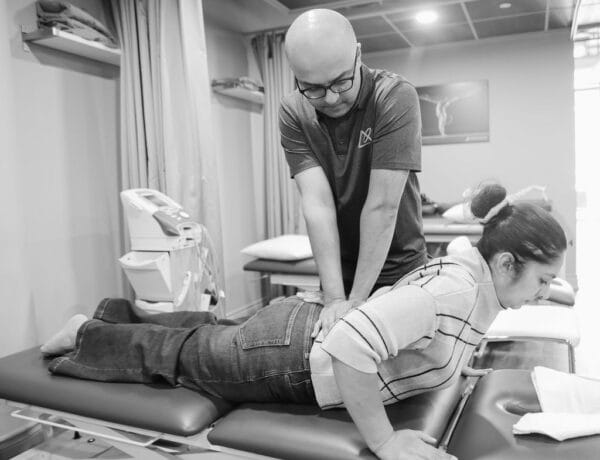
The Mckenzie method utilizes repeated movements for assessment , diagnosis and treatment. It is a comprehensive and clinically reasoned evaluation of patients where the emphasis is on patient independence , avoidance of therapist dependency, and use of minimal intervention.
Also read, Best Physiotherapy Clinic in Etobicoke
What lower back problems can we treat with Mckenzie?
Developed by world-renowned expert physiotherapist Robin McKenzie in the 1950s, this well-researched MDT is a reliable assessment process intended for all musculoskeletal problems, including pain in the back, as well as issues associated with sciatica, sacroiliac joint pain, arthritis, degenerative disc disease, muscle spasms and intermittent numbness in feet. If you are suffering from any such issues, then a MDT assessment may be right for you!
How does it work?
Most musculoskeletal pain is “mechanical” in origin, which means it is not due to a serious pathology like cancer or infection but a result of abnormal forces or mechanics occurring in the tissue. Further, it means that a position, movement or activity caused the pain to start. If a mechanical force caused the problem then it is logical that a mechanical force may be part of the solution. The MDT system is designed to identify the mechanical problem and develop a plan to improve it. In the simplest and most common instance, this may mean that moving in one direction may provoke and worsen the pain, and moving in the opposite direction may eliminate the pain and restore function.
Also Read, Best Clinic for Physiotherapy in Oakville
Assessment, treatment and prevention.
The McKenzie assessment process begins with the trained clinician taking a detailed history about your symptoms and how they behave. This enables the clinician to identify specific pain patterns, which then helps the clinician develop a treatment plan specific to your pattern of presentation. The clinician will prescribe specific exercises and advice regarding appropriate postures and ergonomics.If your problem has a more difficult mechanical presentation, a certified McKenzie clinician can provide advanced hands-on techniques to help manage the problem until you can self-manage.The aim is to be as effective as possible in the least number of treatment sessions. By learning how to self-treat your current problem, you gain hands-on knowledge to minimize the risk of recurrence and rapidly deal with symptoms if they recur putting you in control safely and effectively. The chances of problems persisting can more likely be prevented through self-maintenance.
Take control of your pain, empower yourself and get back to the life you love with the McKenzie Method of Mechanical Diagnosis and Therapy.
Book an appointment with our McKenzie Certified Physiotherapist, Ankit Doshi, BPT, MClSc (Adv Healthcare Practice), FCAMPT, CGIMS, Cert. MDT
Related Tags : Physiotherapy Toronto, physiotherapy Oakville, physiotherapist Toronto, physiotherapist North york, physiotherapists Toronto, physiotherapists Oakville, physiotherapy exercise Toronto, physiotherapy exercise Oakville
The McKenzie Method is a proven approach for managing low back pain through specific exercises and posture correction. If you are seeking professional physiotherapy to help with back pain, there are excellent clinics in physiotherapy Etobicoke, Oakville, North York, Toronto, Lawrence Park, Queens Quay, Erin Mills, Mississauga, and Liberty Village. These clinics provide personalized care and expert guidance to help you manage pain and improve your quality of life.

